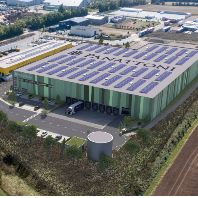Cushman & Wakefield has summarized the first half of 2024 on the Polish office market. Office demand shows signs of stabilization amid muted development activity which is likely to continue until the end of 2026.
SUPPLY: Developers remain cautious about launching new projects
At the end of the second quarter of 2024, the combined office stock of Poland’s nine largest markets (Warsaw, Krakow, Wrocław, Tricity, Katowice, Poznań, Lodz, Lublin, and Szczecin) amounted to nearly 13m m2.
“Total new office supply hit approximately 125,000m2, most of which was delivered in Warsaw, Wroclaw and Krakow. The pace of office deliveries slowed significantly in the last three years. Although a handful of office projects broke ground in this period, development activity remains subdued. For example, there is c. 215,000m2 of new office space under construction in Warsaw - almost the same as in regional cities. The office development pipeline in the largest regional cities stands at approximately 210,000m2 compared to the pre-pandemic 850,000m2,” commented Ewa Derlatka-Chilewicz, Head of Research, Cushman & Wakefield.
The largest office completions were Cavatina Holding’s Quorum Office Park A in Wrocław (18,200m2), Yareal’s Lixa E in Warsaw (16,900m2), the refurbishment of CA IMMO’s Saski Crescent in Warsaw (15,500m2), and Ghelamco’s Vibe I in Warsaw (15,000m2).
“We estimate that approximately 225,000m2, including office completions in the year to date, will be added to the Polish office market this year. Development activity is expected to pick up slightly in 2025, which is likely to see another 240,000m2 come on stream. Higher supply levels are unlikely until after 2026,” said Vitalii Arkhypenko, Market Analyst, Cushman & Wakefield.
TAKE-UP: Leasing activity is set to stabilize
Total leasing activity in Warsaw in the first half of 2024 amounted to more than 316,000m2, down by a mere 2% from the same time in 2023.
“Office take-up remained largely unchanged year-on-year, which is attributed to the gradual stabilization of the office rental market and a trend towards optimizing office footprints. Leasing activity in regional cities amounted to 286,000m2 in the first six months of 2024, down by 14% year-on-year. Regional take-up predominantly came from the IT, service and manufacturing sectors,” said Jan Szulborski, Business Development & Insight Manager, Cushman & Wakefield.
In the first half of 2024, the structure of demand in Warsaw was dominated by renewals which accounted for approximately 51% of all deals. New leases and expansions made up 42% and around 7% respectively. Regional cities posted a similar structure of demand, with renewals accounting for a large share of take-up at 49%, followed by new leases and expansions making up 46% and 5% respectively. In the second quarter of 2024, absorption in regional cities slightly exceeded new supply.
Vacancy rates show minor movements as rents remain relatively stable
At the end of the second quarter of 2024, Poland’s overall vacancy rate was 14.4%, down by 0.1 pp over the quarter but up by 0.3 pp year-on-year. Warsaw’s vacancy ratio stood at 10.9%, a decrease of 0.1 pp compared to where it was in the previous quarter. Of all the regional cities, Tricity and Wrocław recorded the largest drops in vacancies, with Lodz and Szczecin seeing the largest increases.
The average regional city vacancy rate was 17.7%. Office availability in all the surveyed markets amounted to 1.87mm2, representing a 4% increase compared with the first half of 2023.
In the second quarter of 2024, prime office rents in Warsaw stood at €22.00-26.00/m2/month in the Centre and at €13.50-16.50/m2/month in non-central locations. Average prime office rents in central locations in regional cities were €12.50-16.50/m2/month, with new office buildings in prime locations commanding above-average rental rates.
“Elevated office construction, fit-out and project financing costs continue to significantly impact rental rates in projects underway. Rents in existing office buildings largely depend on the attractiveness of a building to prospective tenants, its solutions supporting ESG goals and individual market dynamics,” concluded Ewa Derlatka-Chilewicz.
Image source - Pexels.
Europe Real Estate — an overview of real estate developments in European countries.















